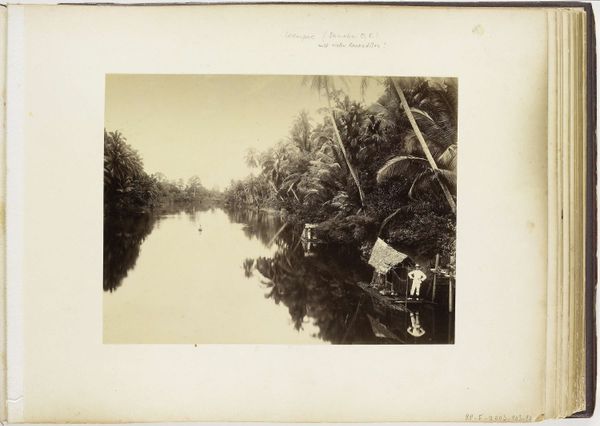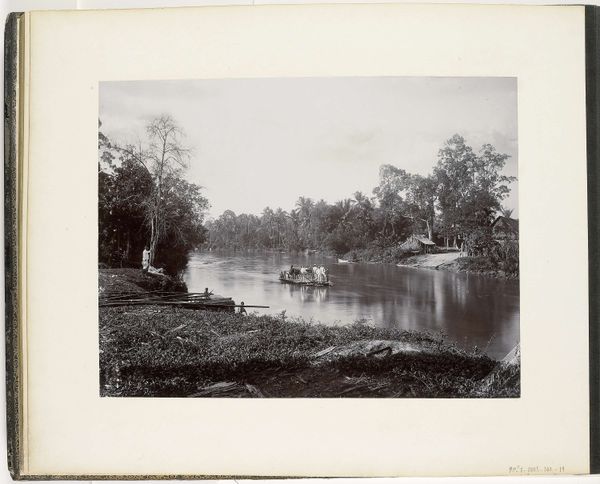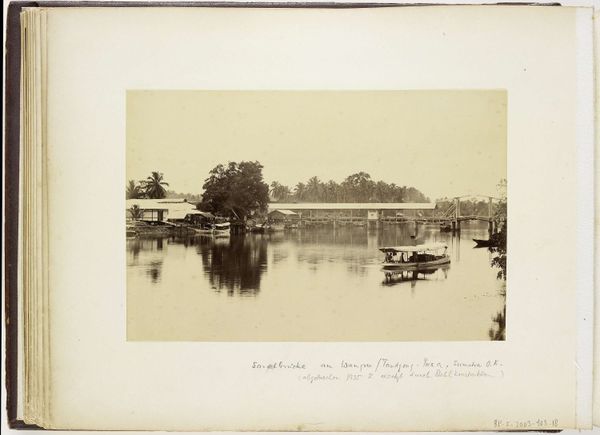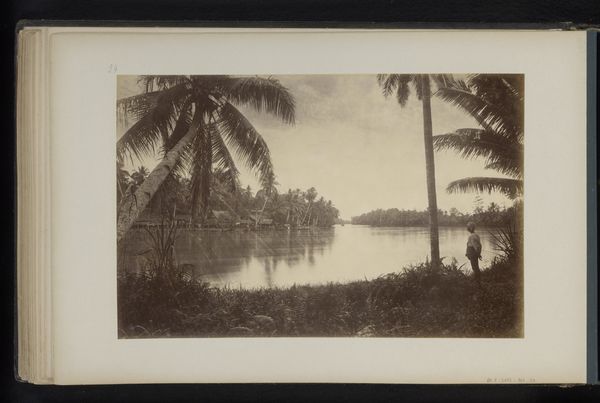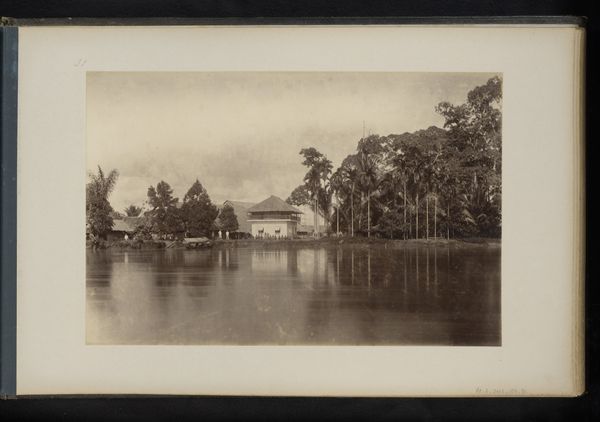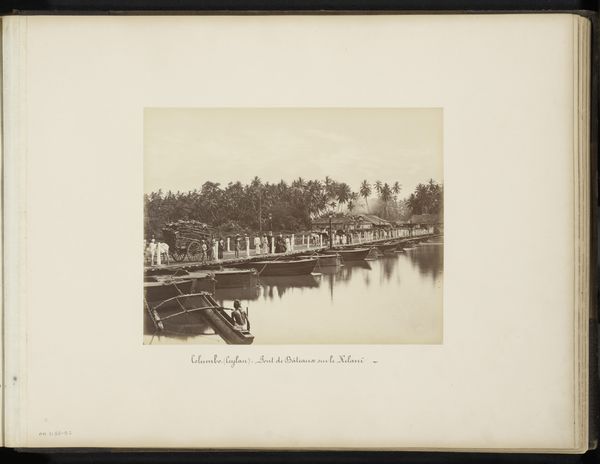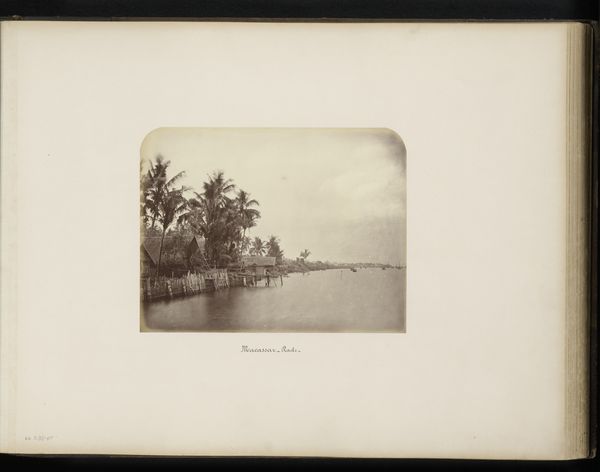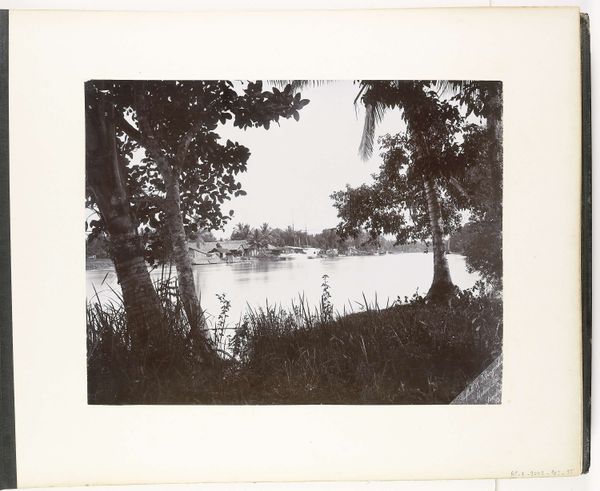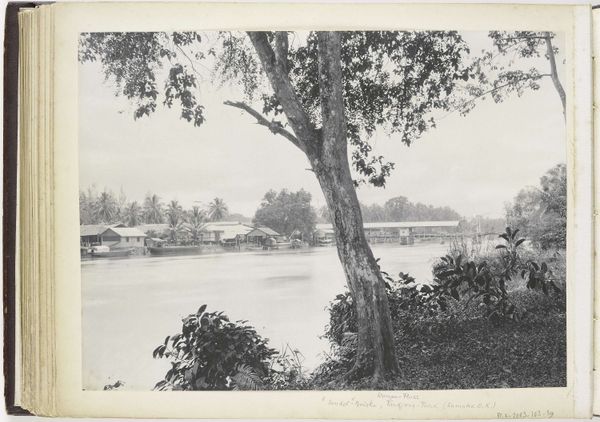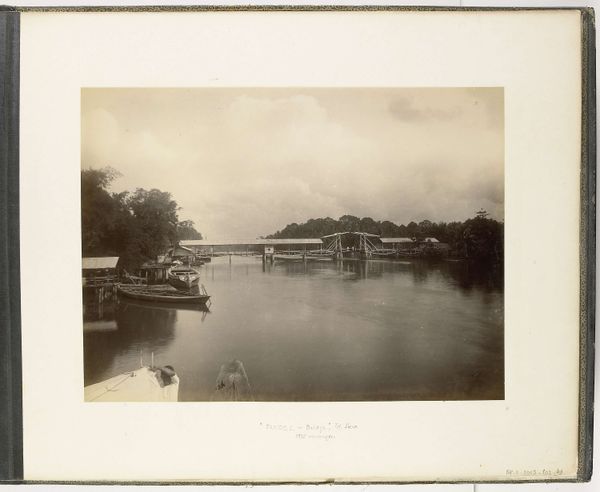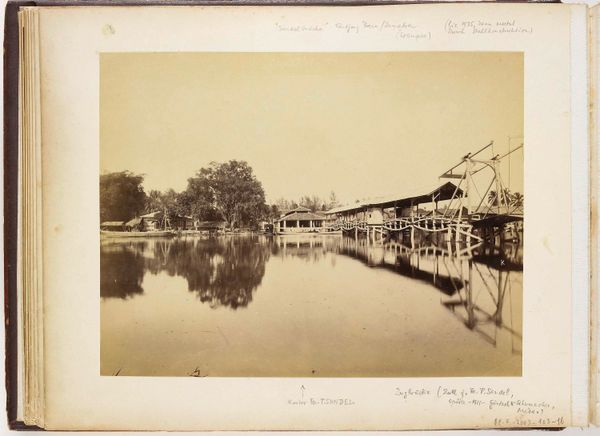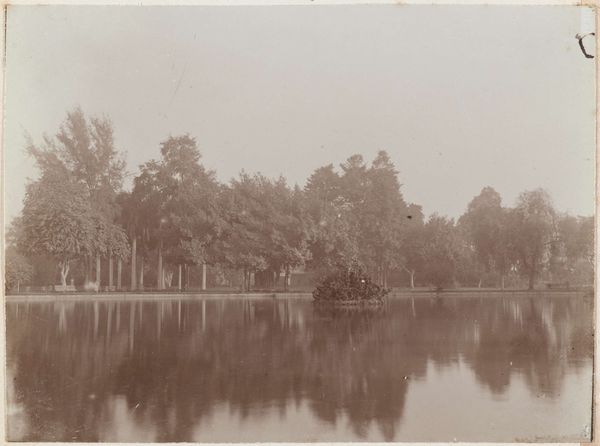
Gezicht op de Wampoe rivier, Tandjong Poera, Langkat Sumatra c. 1890 - 1900
0:00
0:00
photography
#
landscape
#
photography
#
orientalism
Dimensions: height 145 mm, width 228 mm
Copyright: Rijks Museum: Open Domain
Curator: This sepia-toned photograph offers us a glimpse into the past: "Gezicht op de Wampoe rivier, Tandjong Poera, Langkat Sumatra," taken circa 1890-1900 by Heinrich Ernst & Co. It is currently held in the Rijksmuseum collection. Editor: My immediate reaction is one of profound tranquility, almost silence. The composition is remarkably balanced, despite the evident asymmetries of nature. The rower, small and solitary, accentuates the immense calm. Curator: Yes, the photographer has skillfully used the river as a leading line, drawing our eye into the depths of the Sumatran landscape. Notice the contrasts between the left and right banks. One populated, and the other dark and teeming with life. This interplay introduces dynamism into what could have easily been a static scene. Editor: The photograph’s inherent Orientalism is hard to overlook, especially given the abundance of lush flora. Palms emerge not merely as naturalistic detail, but as carriers of cultural meaning; symbolizing the exotic Other. Curator: Agreed, yet it's worthwhile to consider the formalism inherent within such 'Orientalist' compositions. See how tonal variation shapes visual hierarchies, with a distinct contrast applied across receding picture planes, manipulating how we receive scale and distance within the piece? The very geometry seems deliberately constructed to guide our viewing experience. Editor: Certainly. And within those constructed geometries, lies potent symbolism. Water, in almost every culture, carries associations of change, the unconscious. This river is no mere backdrop, but the silent protagonist. Look at how the single rower might stand for Man's transient relationship to that elemental force. Curator: Very interesting. Finally, I'm struck by the photographer's treatment of light and shadow; note how certain areas receive stark highlights to create visual interest without compromising the tonal continuity essential to this genre of early photography. It speaks to precision, while subtly avoiding visual distraction. Editor: A fascinating distillation of the real and the symbolic! Seeing beyond a literal, geographical reading really reveals rich meaning.
Comments
No comments
Be the first to comment and join the conversation on the ultimate creative platform.
